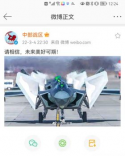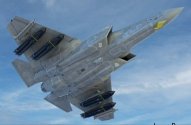That said being detected by dedicated assets such as AWACS is not a knock against F-35’s capabilities. Creating so-called “anti-stealth networks” is very resource intensive, and not even China can do it to cover all of its bases and has to focus on a few selected directions only. And this is not taking into account the fact that what worked against fifth gen fighters may not work against something with all aspect VLO like the NGAD or B-21.
I am now coming to the realization that B-21 may prove to be the greatest threat to Chinese air defense in the near future.
It's going to become increasingly cheaper over time. Adding anti-stealth radar like YLC-8E along the cost over time, the coverage should continue to improve. Also in the future as more 052D come online with L-band radar and operate along the coast, they should also provide additional data point to the so called anti-stealth networks. And in the future, as more of divine eagle type of UHF band AEW UAVs join service, they will be able to perform more routine patrols allowing them to occasionally catch F-35s along East China Sea.
I expect China to get a lot better with stealth countermeasures over the next decade. Similarly, I expect USAF to also get a lot better since now they have a legitimate target to deal with even if J-20 doesn't have all aspect stealth. The next generation aircraft will need to significantly improve stealth level if they want to stay hidden.
As for B-21, I think it will be a game changer. However, I would be very surprised if it can fly into Chinese air space undetected in wartime scenario. The Chinese anti-stealth radar will continue to get larger and more sophisticated over time and will allow them to detect even a flywing design like B-21 from further out. As long as you can detect B-21 at some small range outside of your air space, then you are not worried about it flying over your military base and dropping 10t of bombs on a J-20 base of your largest military shipyard.
I see H-20 as similar game changer for PLAAF as B-21. I think H-20 and follow-on to GJ-11 will allow PLAAF to do similar missions against less well defended military bases within second chain. They will also let China try out their anti-stealth solutions against very VLO targets.
If you look at GJ-11. That is really stealthy. That's a great target to test your system against. Just as J-20 was used to test PLAAF defense against F-22/35, GJ-11 and H-20 can be used in the future to test your defense against B-21s.
One other point that Yankee and ShiLao raised in the podcast is that the USAF is very concerned with whether J-20 is air superiority or true multi role like the F-35 because the latter is an offensive weapon. An aircraft with advanced strike capabilities can pose a much greater threat against US naval forces than a dedicated fighter, and this is especially complicated with a fifth gen since you can’t determine the missile profile easily since the weapons are internal. A carrier strike group will only send two or three aircraft to intercept an air to air fighter, but will exhaust everything at its disposal to stop a strike fighter.
I don't agree with that premise. Since a multi-role J-20 could never drop enough ammunition to threaten USN ships. That's where the loyal wingman concept comes in. A j-20 two seater or a future J-20D would be more lethal in controlling a man of VLO GJ-11 types to attack something like a Burke class destroyer by dropping a bunch of gliding PGMs or even stealthy ARMs. In those cases, you can achieve mission kills against radar/missions of the target ship without ever exposing J-20. Is any Chinese naval ship worried about a couple of missiles from F-35? A high valued stealth fighter would only endanger itself by carry a couple of missiles close to a carrier group and dropping them.
It's unlikely the F-35s were sans Luneberg lenses. The last thing the US would want to do is give a China a look at a "clean" F-35. On the other hand you can be certain the US knows exactly the size of the F-35s RCS with the lenses in place and can extrapolate reaction times and detection ranges.
I agree that in most cases, these fighter jet are probably operating with Luneberg lens. However, I don't know how much Luneberg lens change signatures against these really large UHF band radar stations. It would be easy for US to extrapolate reaction times and ranges if they are repeatedly flying toward the same radar, but China is moving forward in this area pretty rapidly. It's not the same as PLAAF flying over and seeing the same Taiwan air defense radar every day.
China is saying they have encountered all 3 variants of US operated F-35s many times. It would be unlikely they have never detected F-35 without Luneberg lens. They said they have even tracked the decaying stealth from F-35B/Cs as they spend longer time on deck on a deployment. That is also a good lesson for PLAN as it looks to introduce J-35 in a few years. Maintaining stealth layer on board or even a forward deployed base isn't the same as a dedicated F-35 hangar/base.
I think that's actually the game changing part of B-21. You don't have to station them in their home page in CONUS. You can forward deploy them to Guam for example.


